The Ministry of Food and Drug Safety and the National Arboretum of the Korea Forest Service urged special attention as there are continuous cases of damage complaining of enteritis after arbitrarily collecting and consuming poisonous plants similar to wild greens in the spring season.
In the past five years, a total of 41 cases have reported to the Korea Consumer Agency's Consumer Risk Monitoring System and complained of abdominal pain, 33 of which were reported from March to June, accounting for 80% of the total.
The reason why we should be careful about poisoning by consuming poisonous plants in spring is that it is not easy to distinguish wild greens from poisonous plants only by their leaves or roots before they bloom. Representative poisonous plants in spring include A.S. arabis, agatnamul, dongdongnamul, silver cherry blossom, and furrow.
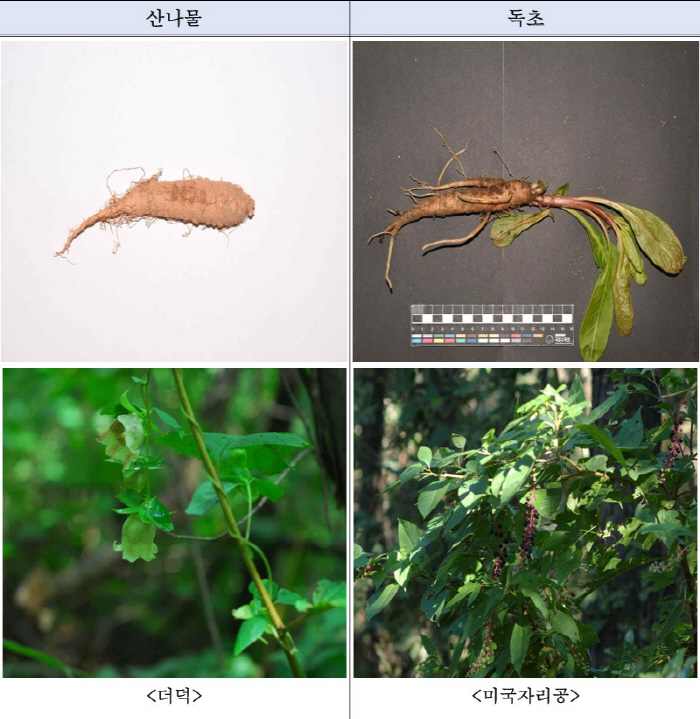 |
| Photo = Forest Service National Arboretum |
|
Although the roots of the poisonous plant 'Deodeok', a vine-like perennial similar to bellflower and ginseng, are wrinkled horizontally, the roots of the poisonous plant 'American Zaryong' are smooth without wrinkles, purple stems come from thick roots, and have no scent.
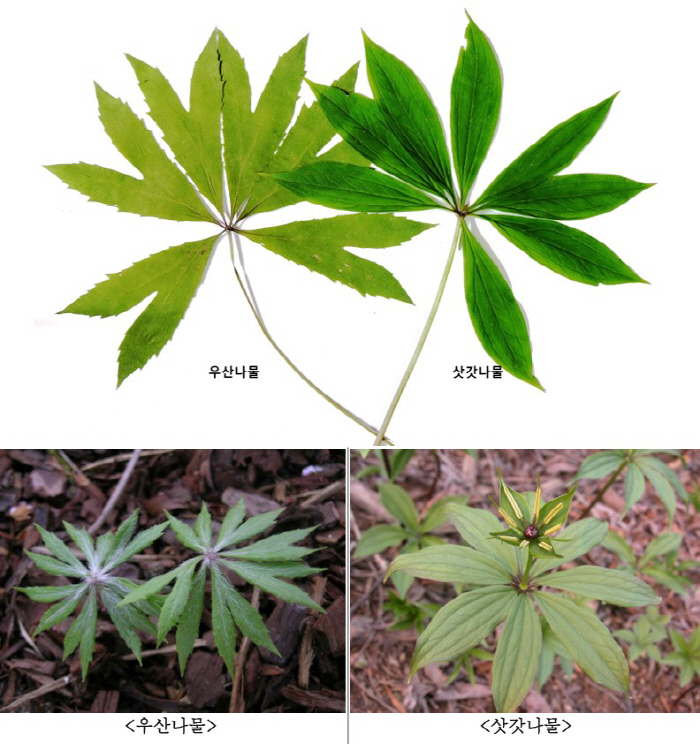 |
| Photo = Forest Service National Arboretum |
|
The poisonous plant 'Catnool' is a plant similar to 'Catnool', which uses its roots for medicinal or edible use, and the umbrellanool has a finely divided leaf edge and a deep leaf split in two rows, while the leaf edge does not split at the end of the stem.
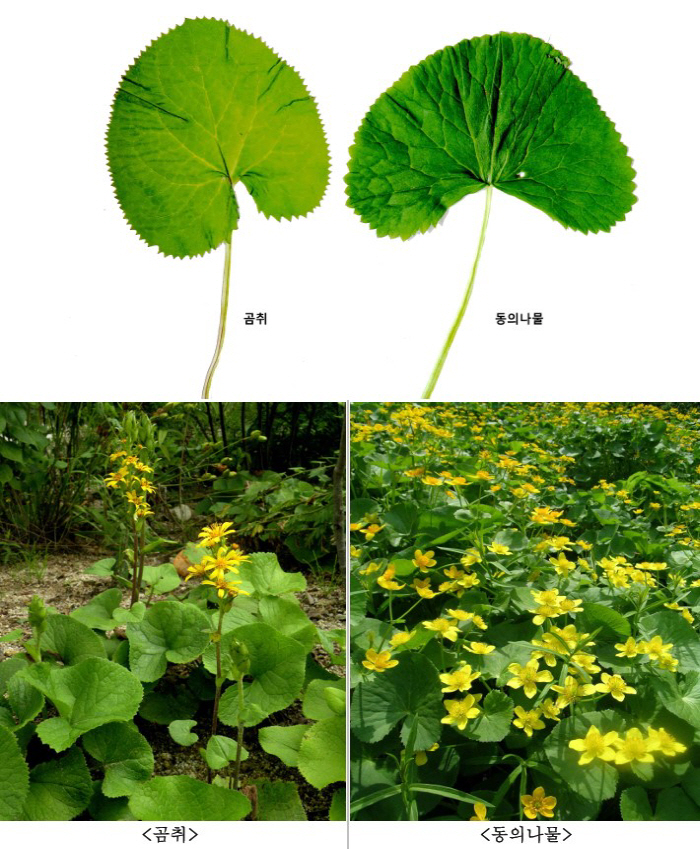 |
| Photo = Forest Service National Arboretum |
|
The poisonous plant 'Dongdongnamul' can be mistaken and mixed with 'Dongdongnamul', which is characterized by a bitter taste. 'Dongdongnamul' has no scent and a dull tooth on the edge of the leaf, whereas 'Gomch' has a good scent, soft, unglazed leaves, and sharp teeth.
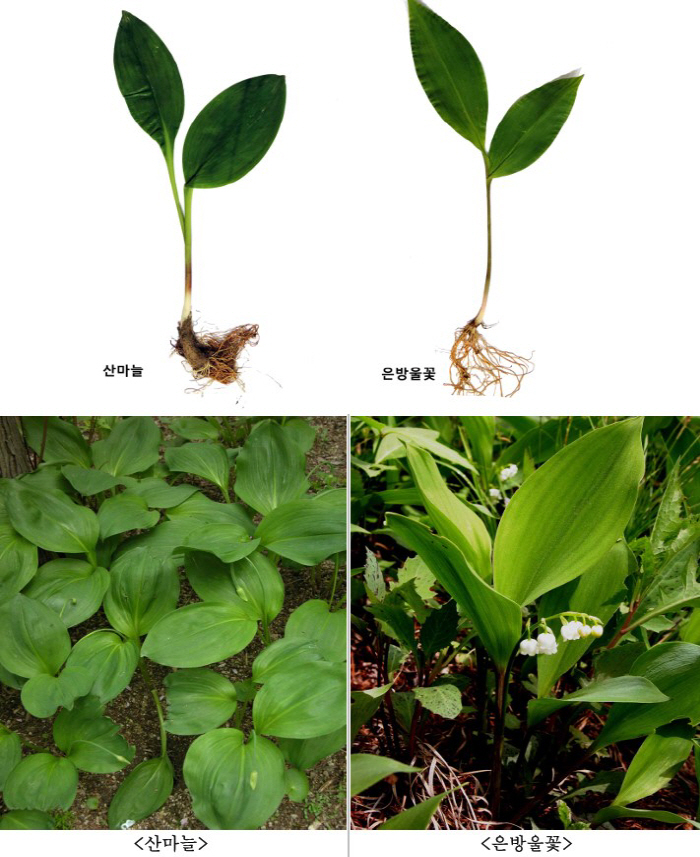 |
| Photo = Forest Service National Arboretum |
|
Similar to the wild garlic', which is called a wild garlic', 'silver cherry blossom' is one of the poisonous plants, and its roots are poisonous, which can put it in danger if eaten incorrectly. Silver cherry blossoms are characterized by straight, strong leaves and raised leaves, and wild garlic has a thick garlic (boochu) scent and two to three leaves on one stem, which can be distinguished.
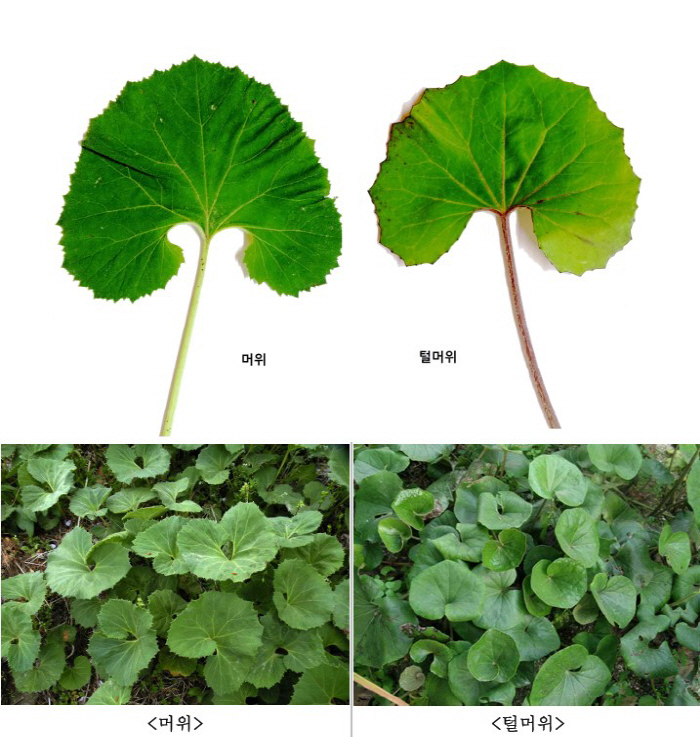 |
| Photo = Forest Service National Arboretum |
|
In addition, 'Murwi' leaves, which are used for medicinal and food purposes, are hairy and soft, whereas 'Murwi' leaves are thick green, glossy on the surface, and brown furry.
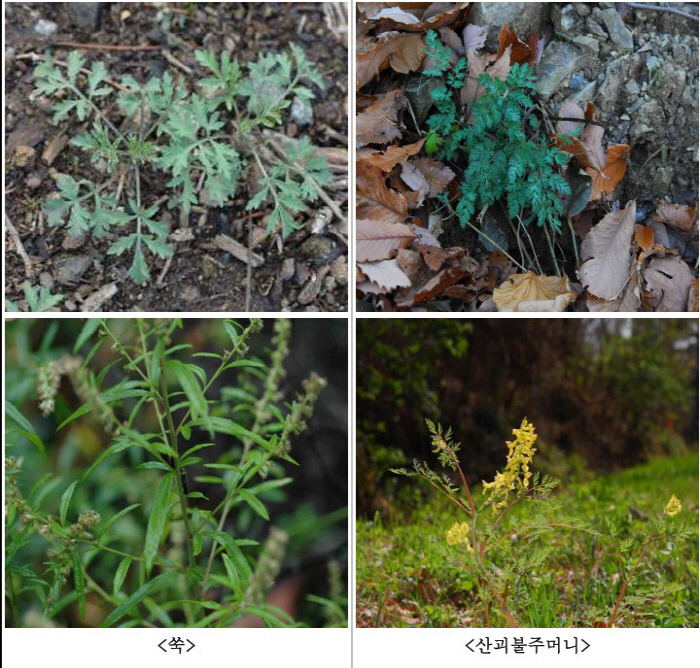 |
| Photo = Forest Service National Arboretum |
|
In addition to this, there are cases where 'mountain firebag' is confused with 'mug'.
The Ministry of Food and Drug Safety should be careful not to collect wild plants arbitrarily and consume them without sufficient knowledge of wild vegetables"If you have abnormal symptoms such as abdominal pain and vomiting after mistaking poisonous plants for wild vegetables, you must visit a hospital, and it is recommended to take the remaining poisonous plants with you for accurate diagnosis and treatment." In addition, even if it is edible wild vegetables, conch, dureup, and bracken contain trace amounts of toxic ingredients unique to plants, so they must be blanched sufficiently in boiling water"Especially, there is a component called colchicine that causes symptoms such as vomiting, and this component appears stronger as the cone grows, so only young leaves must be fully cooked and consumed."," he said.
On the other hand, detailed information on toxic plants is available in a guidebook on toxic plants in spring and fall posted in the National Arboretum's study publication of the Forest Service.
This article was translated by Naver AI translator.



















